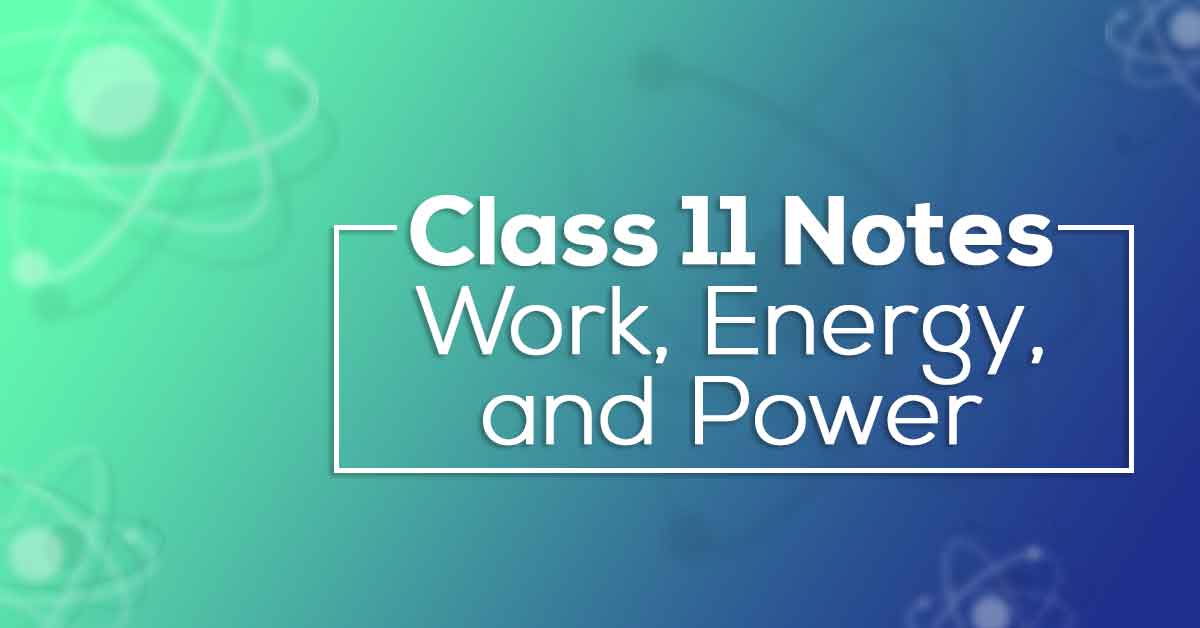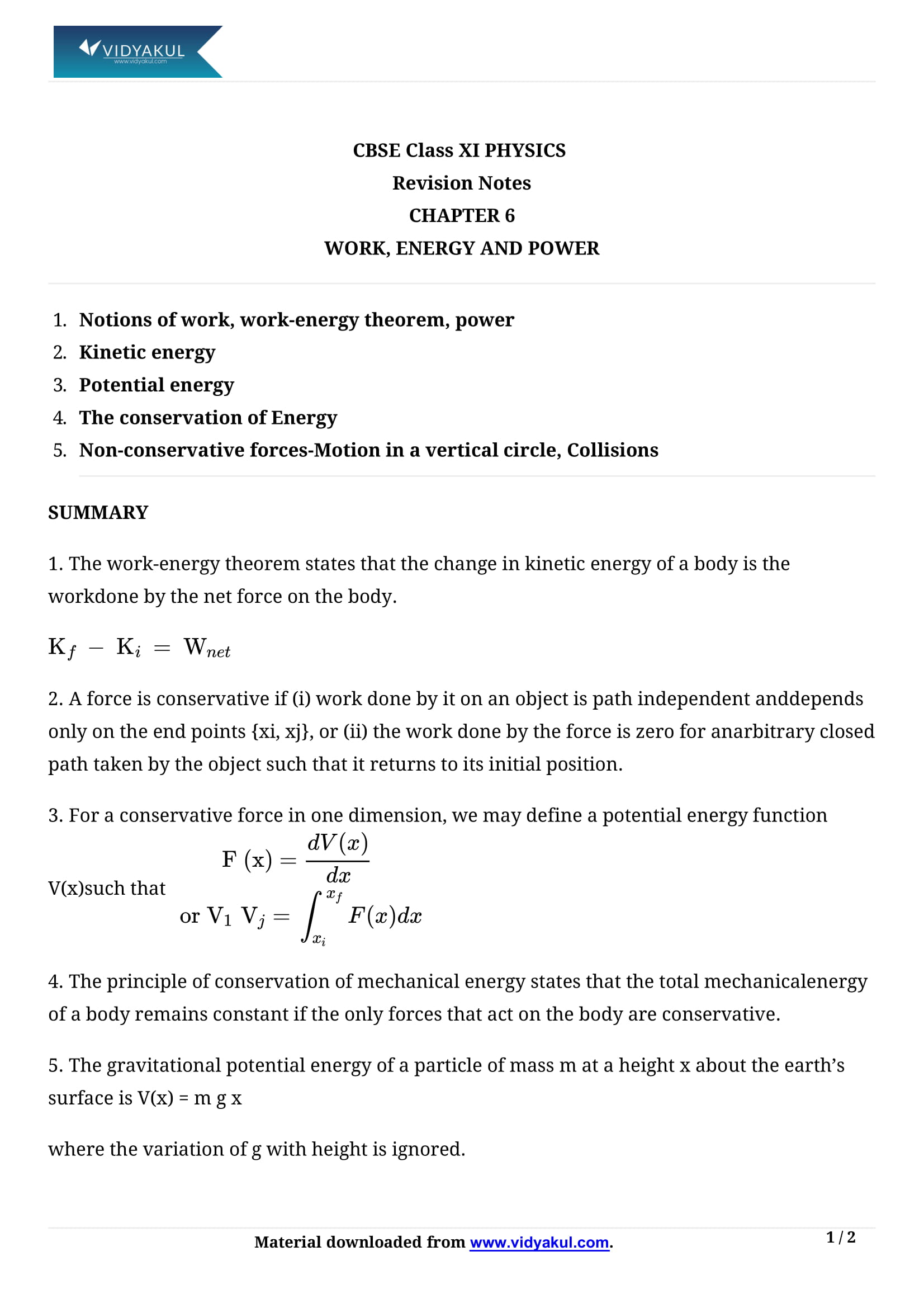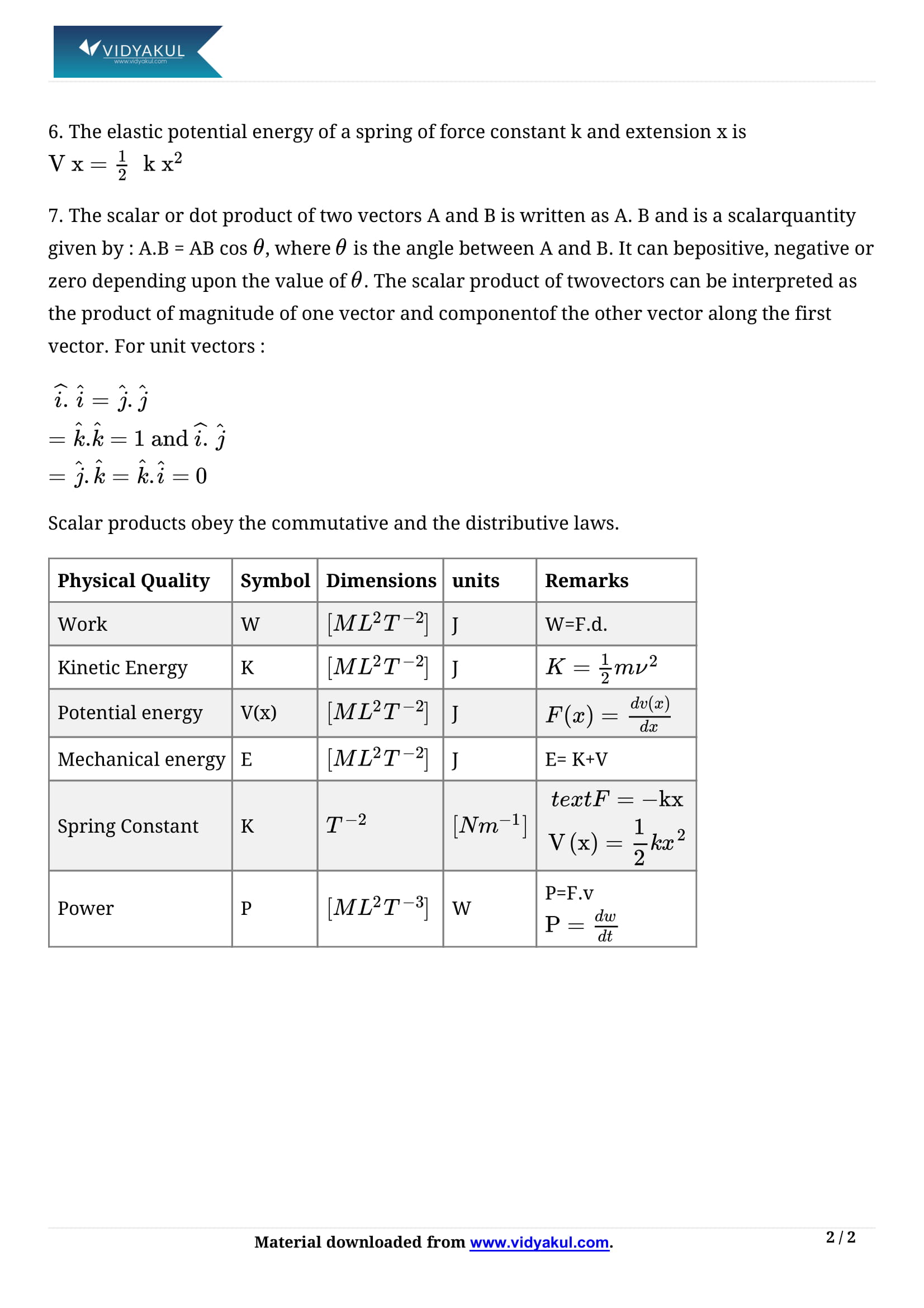Class 11 Physics Chapter 6 Work, Energy and Power Notes

Chapter 6 Work, Energy and Power
NCERT Class 11 Physics Chapter 6 explains the terms "work", "energy" and "power" as examples. A farmer plowing the field and a builder carrying bricks are both said to be at work. This chapter teaches students that the word "work" has a specific meaning in physics.
Practice questions help students prepare for the exam. In addition to these practical questions, Vidyakul provides the NCERT notes for free. NCERT notes are useful for students and remove doubts about the chapter. Therefore, students should refer to it to get good grades. While studying, visit Vidyakul to learn more.
CBSE CLASS 11th PHYSICS CH-6
Points to Remember
Some of the important points to remember from this chapter are as follows:
During a collision, a system’s overall momentum does not change.
When two objects collide, the forces of gravity and springs are never impulsive.
In an elastic collision, the total energy is conserved.
Work done by multiple forces: W = W1 +W2+W3+….
Dimensions of work: Work = [ML2T-2]
Kinetic Energy: K = ½ mv2= p2/2m
Potential Energy: F = -dU/dx
Power: Pav = W/t
Topics and Sub-topics
Students should refer to the NCERT notes for Grade 11 Physics to answer questions about Chapter 6. While studying, students should refer to Vidyakul to understand the concepts. Knowing the topics and subtopics in this chapter will help you prepare well for the exam.
Chapter 6 of Physics for Grade 11 is also important as it can be useful for the exam. Now let's look at the important topics of this chapter.
Few Important Questions
What is the ‘Law of conservation of energy’?
The law of conservation of energy states that the amount of energy is neither created nor destroyed.
What is ‘Work’?
The measure of energy transfer that occurs when an object is moved over a distance by an external force is known as ‘Work’.
What is the definition of ‘Power’?
Power can be defined as the rate of doing work.
Practice Questions
The sign of work done by a force on a body is important to understand. State carefully if the following quantities are positive or negative:
(a) work done by a man in lifting a bucket out of a well by means of a rope tied to the bucket.
(b) work done by gravitational force in the above case,
(c) work done by friction on a body sliding down an inclined plane,
(d) work done by an applied force on a body moving on a rough horizontal plane with uniform velocity,
(e) work done by the resistive force of air on a vibrating pendulum in bringing it to rest.
Underline the correct alternative :
(a) When a conservative force does positive work on a body, the potential energy of the body increases/decreases/remains unaltered.
(b) Work done by a body against friction always results in a loss of its kinetic/potential energy.
(c) The rate of change of total momentum of a many-particle system is proportional to the external force/sum of the internal forces on the system.
(d) In an inelastic collision of two bodies, the quantities which do not change after the collision is the total kinetic energy/total linear momentum/total energy of the system of two bodies.
During a collision, a system’s overall momentum does not change.
When two objects collide, the forces of gravity and springs are never impulsive.
In an elastic collision, the total energy is conserved.
Work done by multiple forces: W = W1 +W2+W3+….
Dimensions of work: Work = [ML2T-2]
Kinetic Energy: K = ½ mv2= p2/2m
Potential Energy: F = -dU/dx
Power: Pav = W/t
What is the ‘Law of conservation of energy’?
What is ‘Work’?
What is the definition of ‘Power’?
The sign of work done by a force on a body is important to understand. State carefully if the following quantities are positive or negative:
(a) work done by a man in lifting a bucket out of a well by means of a rope tied to the bucket.
(b) work done by gravitational force in the above case,
(c) work done by friction on a body sliding down an inclined plane,
(d) work done by an applied force on a body moving on a rough horizontal plane with uniform velocity,
(e) work done by the resistive force of air on a vibrating pendulum in bringing it to rest.
Underline the correct alternative :
(a) When a conservative force does positive work on a body, the potential energy of the body increases/decreases/remains unaltered.
(b) Work done by a body against friction always results in a loss of its kinetic/potential energy.
(c) The rate of change of total momentum of a many-particle system is proportional to the external force/sum of the internal forces on the system.
(d) In an inelastic collision of two bodies, the quantities which do not change after the collision is the total kinetic energy/total linear momentum/total energy of the system of two bodies.
Learn about various Class 11 Physics Chapter 6 Work, Energy and Power Notes pdf.
Download this solution for FREE Download this PDF





